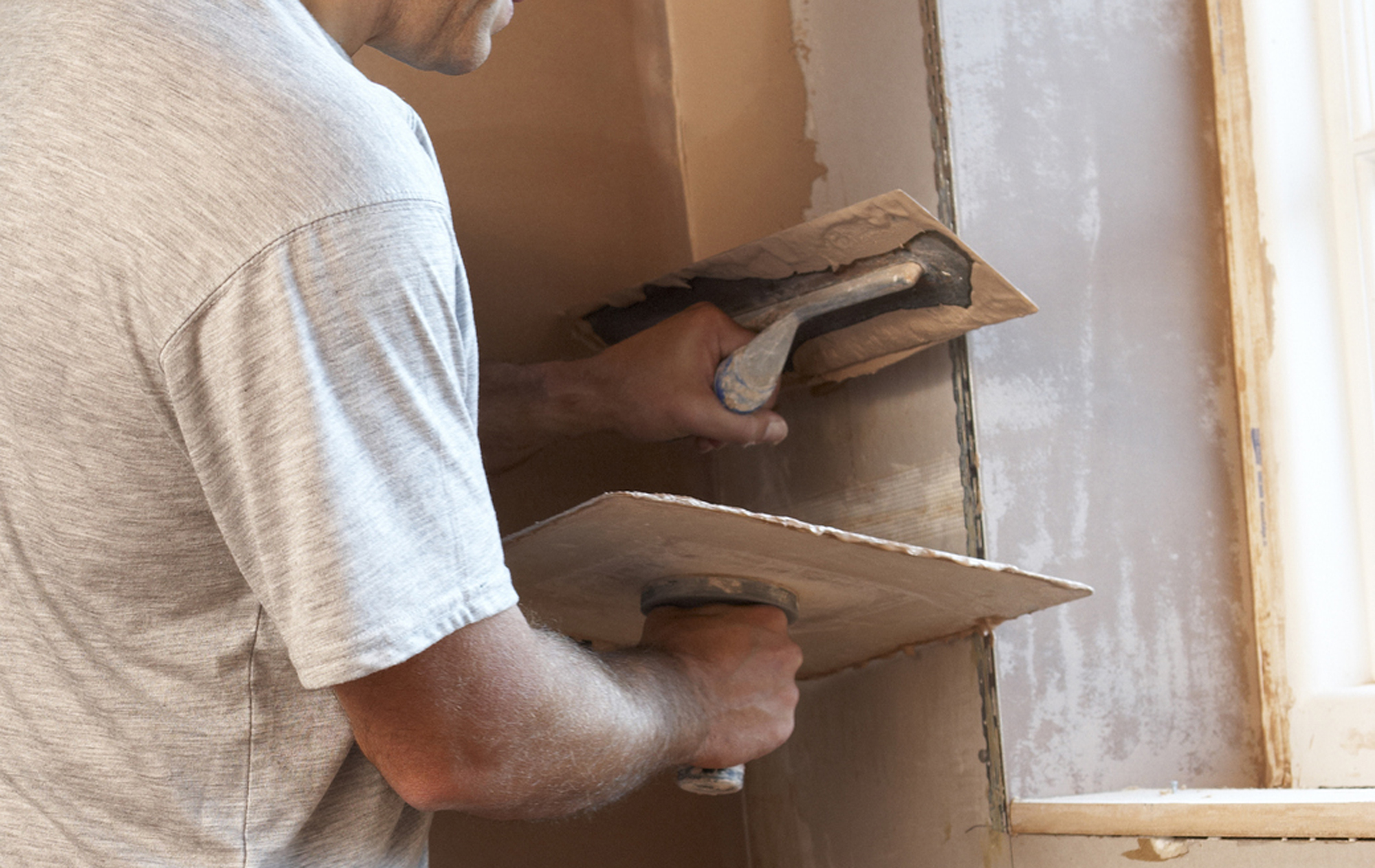Unknown Facts About Plasterer
Wiki Article
The 9-Minute Rule for Plasterer
Table of ContentsThe Ultimate Guide To PlastererAbout PlastererWhat Does Plasterer Mean?Plasterer Things To Know Before You Buy
Typically the specialist has actually currently supplied all the bags of Plaster plaster that will certainly be needed, in addition to any exterior supply of water if your house is not yet connected. The plastering crew requires to bring their very own tools and equipment as well as occasionally provide their own grain. The Tasks that the plasterer is usually expected to accomplish.

In position where even more than one corner meets; the grain's ends are cut at an angle and the 2 or more suggestions are placed as close with each other as permitted; touching but not overlapping. The grain is entirely covered with plaster as well as the remainder of the wall surface as well as the plaster also assists to hold it solid.
This leaves a clean, straight looking edge. An option approach seen in older residences of developing a rounded or bullnosed corner uses a quirked wood personnel bead. The personnel bead, a 1-inch dowel with approx 1/3 shaved off the back, is established on the exterior edge by the joiner on website, fastened to wooden plugs established right into the brick/block seams, or to the wood frame.
Some Of Plasterer
The quirk will hide the ultimate small fracture that will certainly develop in between the team bead as well as plaster. Normally a plasterer has one trowel for "laying on" (the process of putting mud onto the wall).A lay-on trowel has a tendency to be also level for this and also the vacuum cleaner caused by the water can the wall, requiring him to tear it off as well as therefore he has to rework the area. One might have a brand name brand-new trowel "not yet broken-in" which he will certainly made use of for "grinding"; this is when the plaster is virtually solidified as well as he is smoothing out any type of bumps or loading in any small dips (feline encounters) to make the wall look like an uniform sheet of glossy white plaster.
some possess trowels as huge as 20 inches long but the norm seems to be a 16"5". From my experience the favored brand name why not try here is a Marshalltown stainless-steel. They why not look here have a brassy appeal to them, a rubber handle and will not pit or rust if inadvertently left in water overnight while others prefer a normal take trowel which needs more upkeep yet lasts for fairly a long period of time and also the matching can give it a "bite" that helps when "finishing" (the last pass when the plaster is setting).
These tool buckets are initial kept near the mix table and also then as the plaster starts to establish are moved more detailed to the wall that is being dealt with. Time ends up being a big variable right here as once the plaster begins to harden (set) it will certainly do so fairly swiftly and also the plasterer has a small margin of mistake to obtain the wall smooth.
What Does Plasterer Mean?
Any debris in the plaster can end up being a significant hassle. Plasterers will generally split a space, (specifically a huge or high-ceilinged wall surface) right into top as well as bottom. The one working with top will certainly do from the ceiling's edge to regarding belly height and also work off a milk crate for an 8-foot (2.The property owner as well as the plasterer's manager will typically make a decision beforehand what styles they will use in the residence. Generally walls are smooth and often ceilings. Normally a home owner will certainly choose to have the ceilings use a "appearance" method as it is a lot easier, faster, and also therefore less expensive than a smooth ceiling.
The board feet is acquired by the wall mounts or estimated by the head subcontractor by counting the wallboards that come in a market criterion of 8' to 12' long. Usually if the ceiling is to be smooth it is done initially, before the walls.
The factor for this is that invariably when a ceiling is being dealt with plaster will drop and spray onto the walls. Nonetheless a texture mix does not require to be ravelled when it starts to set: therefore a resistant such as "Cream of tartar" or sugar can be made use of to prolong the setting time, and also is easily removed the wall surfaces.
The 4-Minute Rule for Plasterer
another reason is that a bird is typically run along the top corner after doing a smooth ceiling, after that it is easier to preserve this side by doing the wall surface last. But a textured ceiling usually doesn't require to be birded, just combined in with a visit the site really wet paint brush.The first point the plasterer often tends to do is discuss all the mesh-taped seams of the wall surfaces he will cover; in an extremely thin example - Plasterer. The wallboard attracts moisture out of this strip so when the plasterer goes over it once more when doing the remainder of the wall it will certainly not leave an indented seam that needs more reworking.
This conserves a lot needed time as this process is a race versus the chain reaction. From the mix table the plasterer scoops some "mud" onto the center of his hawk with his trowel. Holding the hawk in his off-hand as well as his trowel in his main the plasterer then scoops a bulging roll of plaster onto his trowel.
Report this wiki page